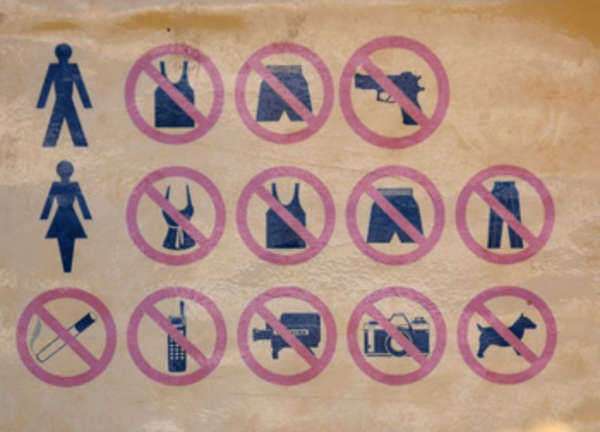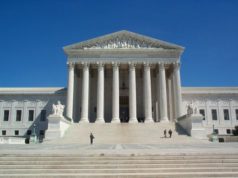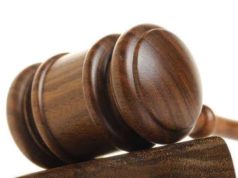Table of Contents

The issue of racial discrimination has been at the forefront of the American justice system for decades, and the Supreme Court has played a critical role in shaping the country’s laws and policies. Racism, white supremacy, and prejudice have affected minorities across the U.S., ranging from job and education opportunities to housing discrimination, criminal justice, and voting rights. Despite the legal progress made over the years, the Supreme Court’s decisions have been met with both praise and criticism, with some arguing that the Court has perpetuated racial discrimination.
This article explores the Supreme Court’s history of racial discrimination and the decisions that have impacted civil rights in the United States. We’ll delve into some landmark cases, including Plessy v. Ferguson, Brown v. Board of Education, Bakke v. University of California, and Shelby County v. Holder, to understand how the court’s rulings have affected individuals and communities across the country.
Plessy v. Ferguson
In 1896, the Supreme Court issued one of the most infamous decisions in American history with Plessy v. Ferguson. The case challenged the constitutionality of segregation laws in Louisiana, which mandated separate railway carriages for white and black passengers. Homer Plessy, a man of mixed-race ancestry, boarded a “whites-only” train carriage and was subsequently arrested, leading to a legal battle that made it all the way to the Supreme Court.
In a 7-1 decision, the Court upheld Louisiana’s segregation law, stating that “separate but equal” facilities did not violate the 14th Amendment, which guarantees equal protection under the law. The ruling legitimized segregation and opened the door for discriminatory policies across the country, from segregated schools to housing and employment discrimination. The Court’s decision was a devastating blow to civil rights advocates and perpetuated racial discrimination for nearly six decades until the landmark Brown v. Board of Education case.
Brown v. Board of Education
Brown v. Board of Education was a pivotal case in American history that challenged segregation in public schools. In 1954, the Supreme Court ruled unanimously that segregation in public schools violated the 14th Amendment and was unconstitutional. The decision was a monumental victory for civil rights in the U.S., and it spurred a wave of legal challenges against racial discrimination in other aspects of American society.
However, implementing the decision was a different story. Many southern states resisted the Court’s decision and refused to desegregate schools for years. The South’s “massive resistance” to Brown v. Board of Education was a clear indication that the Court could make a decision, but it couldn’t necessarily ensure that it was carried out appropriately. The case also sparked a backlash, with some arguing that the Court overstepped its boundaries by striking down segregation laws enacted by states.
Bakke v. University of California
Affirmative action has been a contentious issue in the U.S., with some arguing that it’s a way to correct racial discrimination and promote diversity, while others criticize it as reverse discrimination. In 1978, the Supreme Court tackled the issue in Bakke v. University of California, a case that challenged affirmative action policies in college admissions.
Allan Bakke, a white medical school applicant, sued the University of California, Davis, after being rejected twice, claiming that the school’s affirmative action policies unfairly prevented him from being admitted. The Supreme Court ruled that racial quotas in admissions were unconstitutional, but upheld the use of race as a factor in admissions to promote diversity. The decision was a complicated one, with multiple opinions, and it essentially allowed colleges to consider race as a factor in admissions but not use quotas.
One of the most significant consequences of the Bakke ruling was that it spurred a wave of challenges to affirmative action programs across the country. The Court’s decision also left the door open for future legal challenges to affirmative action.
Shelby County v. Holder
In 2013, the Supreme Court issued a controversial decision in Shelby County v. Holder, which weakened key parts of the Voting Rights Act. The case involved Shelby County, Alabama, challenging the constitutionality of Section 5 of the Voting Rights Act, which required certain jurisdictions with a history of voter discrimination to seek approval from the Department of Justice before changing any voting laws.
In a 5-4 decision, the Court struck down Section 4 of the Voting Rights Act, which determined which states and counties were subject to federal oversight, stating that it was outdated and unfairly targeted certain areas. The decision effectively gutted Section 5, which meant that these areas were no longer subject to federal oversight. Many civil rights advocates viewed the ruling as a major setback in the fight for voting rights and feared that it would lead to an increase in voter discrimination.
Conclusion
Racial discrimination continues to be a prominent issue in American society, and the Supreme Court has played a critical role in shaping the country’s laws and policies related to civil rights. From Plessy v. Ferguson to Shelby County v. Holder, the Court’s rulings have had a profound impact on individuals and communities across the country and have sparked both praise and criticism.
While some argue that the Court’s decisions have paved the way for greater equality and justice, others contend that the Court has perpetuated racial discrimination, either through its rulings or its inaction. Ultimately, the Supreme Court’s role in addressing racial discrimination and advancing civil rights will continue to be a vital issue in American politics and society, and it will require ongoing engagement and debate.
Racial discrimination is that alternate treatment of individuals solely on the basis of race. In reference to such a major issue, we may reference that of the Fourteenth Amendment. The first area of interest within this Amendment is that of the “Equal Protection Clause”.
The Civil Rights Act of 1875 also represented a venue by which racial discrimination may be combated. This statute set forth that every individual despite race, culture, or color of skin, may incur all the rights and public treatments that every citizen was entitled to.
Despite its being held as unconstitutional, a subsequent Civil Rights Act of 1964 presented an equally important and substantial aspect of legislation to combat racial discrimination. It specified that inequality within voting guidelines as well as within schools was illegal. A number of Titles are set forth within this Act. Under each, we see the following qualifications. Aside from voting practices as well as inequality within schools, other public facilities were additionally included. Government agencies existing under the funding of the Government were also at risk of losing such funding due to discriminatory practices.
Arising from the institution of legislature to halt racial discrimination is that of “affirmative action” within the United States. This term entails the equality that must exist in terms of employment as well as education. Ways in which employers must institute such a system include that of modifications made to their recruitment procedures as well as that of their practices of reaching out to the general public.
It hasn’t gone without some kind of controversy, however, especially in relation to that of university admissions. Some reside within the belief that such practices as affirmative action are actually leading to “reverse discrimination”. This term means that discrimination actually is existent against the majority population. In this way, individuals may believe that they may be bypassed despite their eligibility. This presents a new accompaniment to that of the traditional forms of racial discrimination, yet may also represent the ways in which affirmative action itself may be discriminated against. Racial discrimination, whether by way of its practice or abolishment, continues to exist as a subject of much contention within a varied population of people.

























